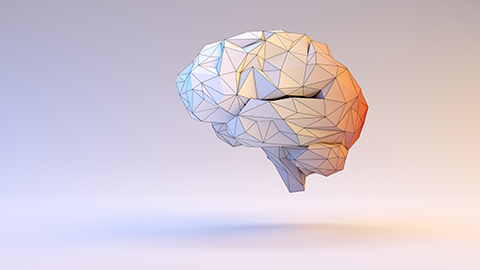
A client can’t find a massage therapist, because they have a condition that no one knows how to work with: Chiari malformation. This is a problem in the spatial relationships between the cerebellum, the brainstem, and the foramen magnum—one patient describes it as, “My brain is too big for my head.”
But is massage really off the table for people with Chiari malformation? Probably not! Listen in for more on what this condition means, and how to figure out where our work fits.
Resources: 
Pocket Pathology: abmp.com/abmp-pocket-pathology-app
‘Chiari Malformation: Practice Essentials, Problem, Epidemiology’ (2021). Available at: https://emedicine.medscape.com/article/1483583-overview (Accessed: 1 March 2022).
Chiari Malformation Fact Sheet | National Institute of Neurological Disorders and Stroke (no date). Available at: www.ninds.nih.gov/Disorders/Patient-Caregiver-Education/Fact-Sheets/Chiari-Malformation-Fact-Sheet (Accessed: 28 February 2022).
Hidalgo, J.A., Tork, C.A. and Varacallo, M. (2022) Arnold Chiari Malformation, StatPearls [Internet]. StatPearls Publishing. Available at: www.ncbi.nlm.nih.gov/books/NBK431076/ (Accessed: 1 March 2022).      


This podcast sponsored by:
About Anatomy Trains:
Anatomy Trains is a global leader in online anatomy education and also provides in-classroom certification programs forstructuralintegration in the US, Canada, Australia, Europe, Japan, and China, as well as fresh-tissue cadaverdissectionlabs and weekend courses. The work of Anatomy Trains originated with founder Tom Myers, who mapped the human body into 13 myofascial meridians in his original book, currently in itsfourthedition and translated into 12 languages. The principles of Anatomy Trains are used by osteopaths,physicaltherapists,bodyworkers,massagetherapists,personaltrainers,yoga,Pilates,Gyrotonics,and other body-minded manual therapists and movement professionals. Anatomy Trains inspires these practitioners to work with holistic anatomy in treating system-wide patterns to provide improved client outcomes in terms of structure and function.
Website:anatomytrains.com
Email:info@anatomytrains.com
Facebook:facebook.com/AnatomyTrains
Instagram: instagram.com/anatomytrainsofficial
0:00:01.2 Ruth Werner: Hey, I Have a Client Who listeners, did you know I have a growing library of NCB approved one-hour online self-paced continuing education courses that you can do any time, anywhere. Well, now you know, current classes include, What's next? COVID-19 updates for Massage Therapists. And a Massage Therapists Introduction to Pharmacology Part One, and brand new, A Massage Therapist's Introduction to Pharmacology Part Two. Classes are $20 each, and they confer one hour of continuing education credit. Want to know more? Visit my website at RuthWerner.com and check it out. Be sure to sign up for my mailing list so you'll never miss a new class.
0:00:48.0 RW: Til Luchau and the advanced trainings faculty invite you to join them on a floating raft house in Thailand for a special 10-day retreat, combining hands-on advanced myofascial techniques with Zoga movement classes. All surrounded by the natural beauty of Thailand's jungle ecosystem. Book now to save your spot for the February 2023 retreat. Plus, check out Til's amazing subscription and get unlimited access to curated bodywork and movement courses from just 20 per month. Learn more about all of these opportunities at advanced-trainings.com.
[music]
0:01:38.6 RW: Hi, and welcome to I Have a Client Who pathology conversations with Ruth Werner, the podcast where I will discuss your real life stories about clients with conditions that are perplexing or confusing. I'm Ruth Werner, author of A Massage Therapist's Guide to Pathology, and I have spent decades studying, writing about and teaching about where massage therapy intersects with diseases and conditions that might limit our client's health. We almost always have something good to offer, even with our most challenged clients, but we need to figure out a way to do that safely, effectively and within our scope of practice, and sometimes, as we have all learned, that is harder than it looks. Today's episode comes from a massage therapist in Pennsylvania, who sent me an email through my website, that's at www.RuthWerner.com, if you'd ever like to do the same. And in this note they asked, to whom it may concern, I am looking for more information regarding Chiari malformation and massage. I was wondering if you have resources on this subject, thank you for your time and assistance.
0:02:49.5 RW: Well, that was polite and formal and lovely, but it didn't give me much to go on, so I followed up for some more information, and here's what they sent. I have a potential client with this condition, they'd love to receive massage, but have not because many previous therapists have declined appointments given the unknowns and possible contra-indications, but not being able to refer out due to lack of resources and knowledge. I myself am unfamiliar with Chiari malformation and how it pertains to massage therapy. When looking for resources from NIH and PubMed, I didn't find anything helpful to this topic, which is how I decided to contact you. In conversation with a physical therapist colleague, we thought Chiari malformation would not necessarily be a contraindication as long as there's no increased pressure like a hydrocephalus going on. And also, would we want this person to have an MRI or other screening to rule out the instability of C1 and C2? I've found some talks from neurologists to gain a better personal understanding from the autonomic nervous system perspective of how Chiari malformation affects daily life.
0:03:57.1 RW: So my questions are, number one, do I work with this individual from a place of caution, care and consideration as observed when I work with people with cancer or people in palliative or hospice care? And question number two, do I refer out? And if so, to whom? This is where I am in my quandary of Chiari malformation and massage, thank you for your time and consideration on this topic, I appreciate you.
0:04:22.0 RW: Well, I appreciate you too, thanks for sending these great questions, and I really appreciate this massage therapists initiative in starting their own search for information and their consultation with another provider to try to suss out what might be possible for a client with Chiari malformation and it kind of breaks my heart that this client has been denied care because no one before this massage therapist ever looked deeper at what might be possible for them. Yes, it's true that a search on PubMed for Chiari malformation and massage turns up a great big goose egg. But there are other ways to gather the information we need to make this decision, so we're gonna look into Chiari malformation with a special eye on how these conditions...
0:05:09.8 RW: Yeah, there's more than one type, might influence some decisions about body work. Chiari malformation is a group of problems with the spatial relationship between the cerebellum, the brain stem, and the foramen magnum. It was first described in the 1890s by an Austrian pathologist, Hans Chiari. Later one subtype was named Arnold-Chiari syndrome to incorporate the work of a German pathologist named Julius Arnold. Thank you, Wikipedia.
0:05:41.6 RW: In this situation, dangly bits of the cerebellum, you remember that, it's the little brain that sits behind and below the cerebrum, these dangly bits extend into the spinal canal, they're called cerebellar tonsils, and what this leads to is dysfunction in the cerebellum and maybe the brain stem and sometimes the lower cranial nerves. Sometimes more of the cerebellum and brainstem might be involved, as we will see in a moment. It turns out that depending on your resources, there are four subtypes of Chiari malformation, type 1 is the most common and it's relatively mild involving just a small portion of the cerebellum. Symptoms might not arise until adulthood, if they arise at all.
0:06:28.4 RW: Type 2 involves both the brain stem and the cerebellum pushing into the foramen magnum, and this is usually seen along with a pretty serious subtype of spina bifida called Myelomeningocele. It can be repaired or at least improved with surgery. This type is the Arnold Chiari malformation that I spoke about earlier. Types three and four are extremely rare, extremely severe, and in the words of one resource usually incompatible with life, so as massage therapists, we are unlikely to see them. For what it's worth, people who are really into this sort of thing, argue that the pathophysiology of types three and four are completely different from types of one and two, and the only thing they have in common is the name. So for the rest of this conversation, we'll focus on types one and two, which are much more common. Type one Chiari malformation is estimated to happen in about one out of every 1,000 live births, but it is often asymptomatic or doesn't turn up until adulthood.
0:07:36.6 RW: I did the math on that by the way, there are about 3.75 million live births in the United States each year, and one 1000th of those is 3,750 people who are born with Type one Chiari malformation each year. Type two is estimated to happen in just under 0.05 times in every 1000 births, so it is much rarer. What does that translate into? Fewer than 1,400 people each year are born with Chiari malformation type 2. These central nervous system anomalies often appear along with some other central nervous system issues, and our understanding of how it affects each individual has to include these possibilities.
0:08:26.3 RW: Sometimes we see hydrocephalus, that means water on the brain, but of course, what it really refers to is a build up of cerebral spinal fluid in a way that can put dangerous pressure on other structures. And as we mentioned, Type 2 is associated with Spina bifida, literally cleft spine. This is a situation where the vertebral arch doesn't fuse all the way during gestation. Spina bifida also has greater severity, sometimes it's severe and obvious at birth and could be deadly. Sometimes it's so subtle people don't even know they have it. Pressure on the brain stem and the cerebellum can cause all kinds of problems, as you can imagine. Remember, the brain stem helps to regulate autonomic function, and the cerebellum has a lot to do with the relationships between our prime movers and antagonists to help set up healthy muscle tone, but also to help set up appropriate posture. Some of the symptoms of Chiari malformation are connected to brain stem dysfunction. So in that situation, we might see things like difficulty swallowing or speaking or drooling.
0:09:34.0 RW: Problems with a gag reflex or vomiting or breathing problems, we'll see this mainly with type two. Cerebellum compression, which we can see also with Type one, can lead to muscle weakness, problems with posture and sometimes serious problems with coordination and balance. Some people with Chiari malformation develop severe scoliosis or Hyperkyphosis that might be related to restrictions on the movement of the spinal cord within the canal, or it might be because the cerebellum is not able to help us maintain healthy posture, and there's a handful of other problems that can affect the spinal cord as well.
0:10:12.4 RW: All kinds of sensory problems can come up with Chiari malformation including dizziness, vertigo, loss of hearing, tinnitus, also headaches, migraines and headaches with a sudden onset like after coughing or sneezing. And a lot of other symptoms might occur including depression, insomnia, neck pain, numbness and having a hard time eating in order to maintain a healthy weight. So what we have learned here is that Chiari malformation is not just one thing, it occurs across a spectrum of severity, and that means our decisions about body work must also be based on that spectrum and not on rubber-stamping whether it's indicated or contraindicated.
0:10:58.3 RW: I reached out to my network of therapists for their experiences of working with clients who have Chiari malformation, and I got back some really interesting input. Here's something one person sent. They said a very close friend has been working with a neuro-specialists to treat their Chiari malformation as well as negative pressure caused by leaks in cerebral spinal fluid, they have both trigeminal and occipital neuralgia, the combination of all these presentations has been debilitating and it has taken years to properly diagnose. Wow, that is very hard to hear, both trigeminal and occipital neuralgia can be incredibly painful, and I know that Chiari malformation turns out to be sometimes quite tricky to diagnose, I really hope this person can get some relief.
0:11:49.2 RW: I spoke to another colleague who has a client with Chiari malformation who was diagnosed in the early 20s, this person had surgery to remove part of the ____ to relief pressure and this solved the immediate problem of hydrocephalus, but it left them with a lot of scar tissue and severely restricted range of motion in the neck. They still have a lot of trouble with temperature regulation, that sounds like a brain stem issue to me, and they get all over fibromyalgia, like body aches and pains and hypersensitivity, especially with low-pressure weather systems. This person does yoga, they exercise, they follow a low inflammatory diet, and they have to monitor their energy output very carefully, but they're under no medical restrictions for exercise and they love, love, love, massage.
0:12:39.0 RW: And yet another colleague generously shared their story with me, this person has Type 1 Chiari malformation, diagnosed in their late 40s after a sudden increase in the severity and frequency of both migraines and vertigo, eventually they had surgery to relieve immediate cerebrospinal fluid pressure. A year later, they had a permanent shunt implanted to help drain excess cerebrospinal fluid out of the head and into the abdominal cavity, the surgery they said was life-changing.
0:13:11.8 RW: This person has not had an attack of vertigo since that time, and their migraines are now extremely rare, unlike our other client, this patient had no problems with scar tissue or loss of mobility in their neck, although they are very sensitive about what kinds of touch they are willing to accept in that area. So to return to our massage therapist and their client, here are their questions once again. Would we want the person to have had an MRI or other screening to rule out instability of C1 and C2? Do I work with this individual from a place of caution, care and consideration as observed when I work with people with cancer or people in palliative or hospice care? And finally, do I refer out? And if so, to whom?
0:14:00.6 RW: For this massage therapist, I have a few recommendations. First find out what kind of Chiari malformation this person has, how severe it is and what they have done and are doing to treat it, because that could range from anywhere from an occasional ibuprofen for headaches to brain surgery with a permanent shunt. As I recommend for almost every condition, we need to get a clear idea of this person's activities of daily living. What kinds of activities they can do, or what do they struggle with that they'd like to do that maybe massage might be able to help with.
0:14:32.4 RW: Then you have enough information to design a session that fits within their parameters for safety. I love that our contributor is thinking about hydrocephalus. Yes, it's important to make sure that that's not an emergent situation, getting information about the stability of C1 and C2 is a good idea, but it doesn't necessarily contraindicate massage if they have some trouble there, it just means we have to be careful around their neck and with positioning. Depending on the vitality and resilience of this client, it probably isn't necessary to do just the most delicate massage, especially anywhere other than the neck. As with any client, we can meet them where they are in their pain levels, their activity levels, and above all in their goals for massage.
0:15:19.3 RW: In terms of referring out, I would be surprised if this client doesn't already have a whole cadre of health care professionals that they're working with. It would be appropriate with their permission to communicate with the rest of their healthcare team to share information and goals so that whatever massage this client receives can be integrated with the rest of their care, if for some reason, this client has not pursued their situation with a neurologist, that's probably the first referral they need from their general practitioner.
0:15:49.7 RW: I am delighted to be able to suggest to our contributor to go forth and massage with care and caution... Sure, but also with curiosity, with enthusiasm, and I'd love to see you carefully document your process because you have the seeds of a terrific case report here and clearly people are eager to learn more about the intersection of Chiari malformation and massage therapy. Hey everybody, thanks for listening to I Have A Client Who, pathology conversations with Ruth Werner. Remember, you can send me your I Have A Client Who stories to, Ihaveaclientwho@abmp.com. That's Ihaveaclientwho, all one word, all lower case @ abmp.com. I can't wait to see what you send me and I'll see you next time.